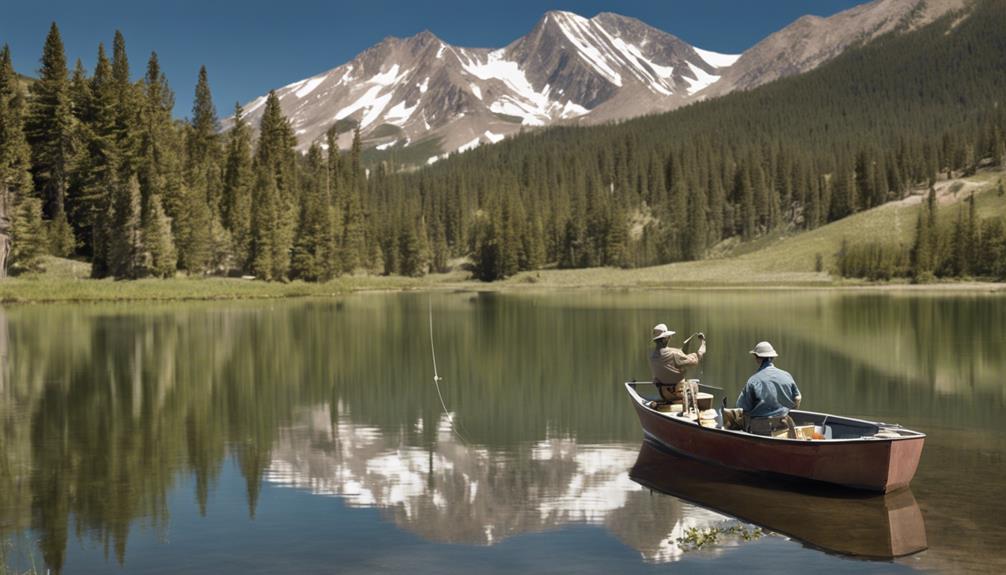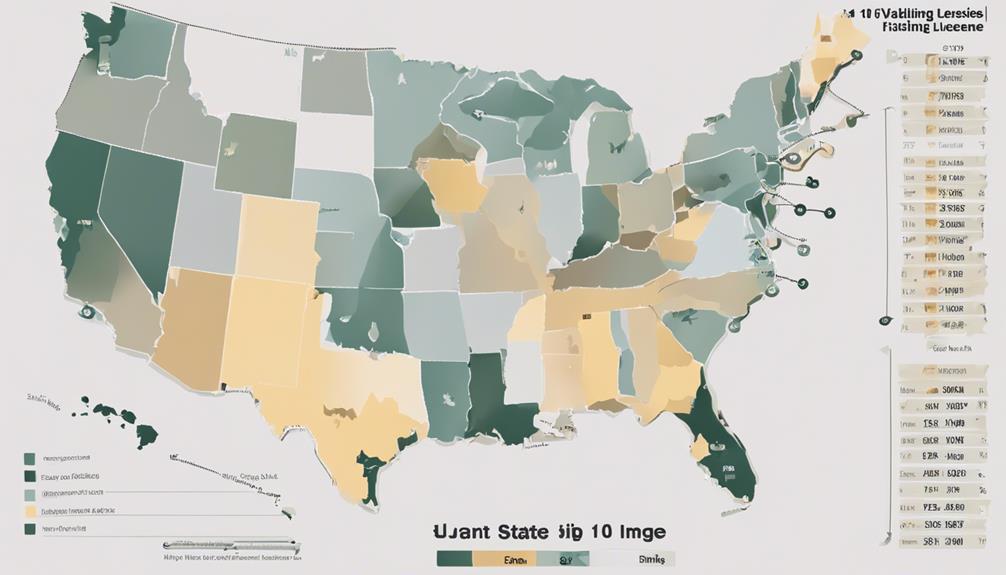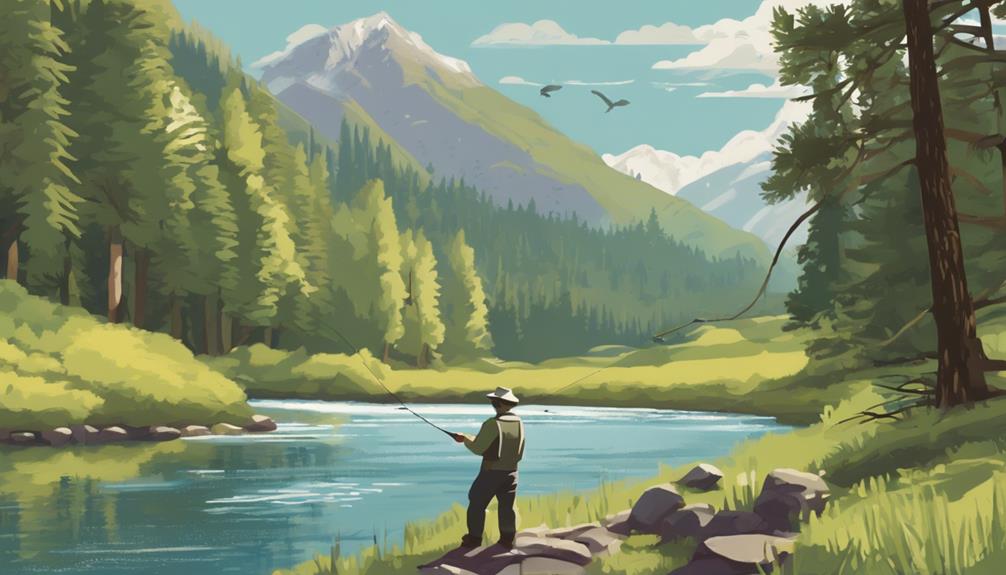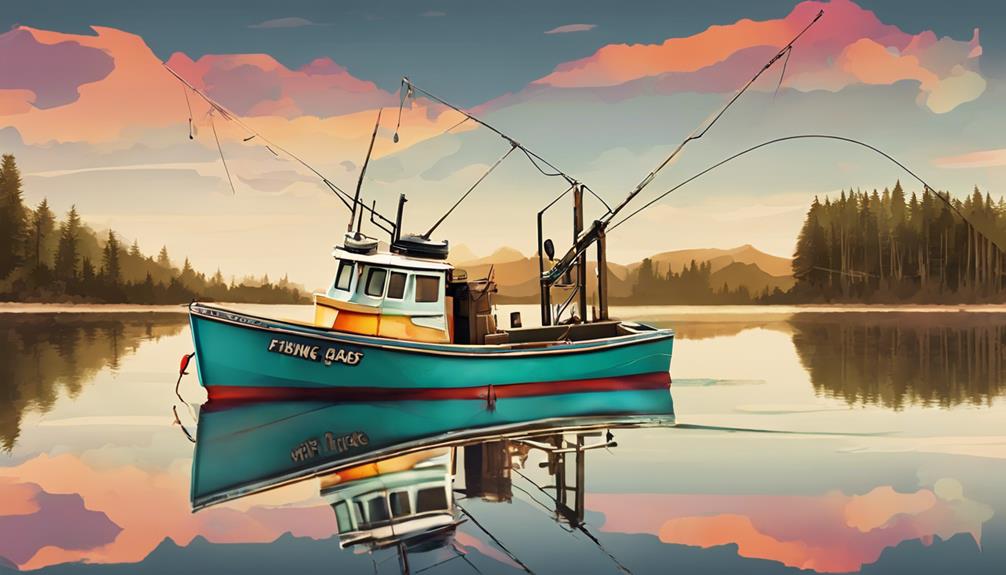When it comes to trout fishing in Colorado, navigating the nuances of licenses and regulations is essential for every angler. Ensuring compliance with the state's requirements can make or break your fishing experience.
From understanding the types of licenses needed to knowing the specific catch and release guidelines, each aspect demands attention to detail. But what about the lesser-known regulations that could impact your fishing excursion in unexpected ways?
Stay tuned as we unravel the intricacies of trout fishing rules in Colorado, shedding light on the dos and don'ts that can influence your next fishing adventure.
Colorado Trout Fishing License Requirements
To fish for trout in Colorado, you must possess a valid Colorado Trout Fishing License. This license isn't only a legal requirement but also a means to promote fishing ethics, conservation, and environmental sustainability. By obtaining a license, you contribute to the funding of conservation efforts that help maintain healthy trout populations and preserve their habitats.
Fishing ethics play a crucial role in ensuring the sustainability of trout populations. Anglers are encouraged to follow catch limits, practice proper handling techniques, and respect fishing regulations to minimize the impact on trout populations. Conservation efforts rely on the support of anglers to protect these valuable fish for future generations to enjoy.
The environmental impact of trout fishing can be significant if not managed properly. Overfishing and habitat destruction are primary concerns that can be mitigated through sustainable fishing practices. Anglers are encouraged to practice catch and release, especially with endangered or sensitive trout species, to help maintain balanced ecosystems.
Catch and Release Guidelines for Trout
Consider adopting responsible catch and release practices when fishing for trout to help maintain healthy populations. By following these guidelines, you can contribute to the conservation of trout in Colorado:
- Use barbless hooks: Barbless hooks are easier to remove, causing less harm to the fish during the release process.
- Minimize fight time: Quickly reel in the fish to reduce stress and exhaustion, improving its chances of survival after release.
- Avoid touching the fish: Keep the trout in the water as much as possible, and handle it gently to prevent damaging its protective slime layer.
- Practice proper catch and release: Release the trout back into the water carefully, allowing it to swim away on its own.
- Consider fly fishing techniques: Fly fishing can be less harmful to fish compared to other methods, reducing the chances of injury and increasing survival rates.
Trout Fishing Season Dates in Colorado
When planning your trout fishing excursions in Colorado, it's essential to be aware of the designated season dates to ensure compliance with regulations. Colorado offers a diverse range of trout species, including Rainbow, Brown, Cutthroat, and Brook trout, each with its habitat preferences. Understanding the season dates can help you target these species more effectively.
Trout fishing season in Colorado typically runs from the first Saturday in April to the last day of September. During this time, you can utilize various fishing techniques and fly patterns to increase your chances of a successful catch. Rainbow trout, for instance, are often found in fast-flowing rivers and streams, making them responsive to nymph patterns. Brown trout, on the other hand, prefer deeper pools and are more likely to bite on streamer flies that mimic small fish.
As the season progresses, pay attention to specific regulations for different bodies of water, as some areas may have extended or reduced seasons based on local conditions. By adapting your fishing approach to the changing seasons and trout behavior, you can enhance your overall fishing experience in Colorado.
Size and Bag Limits for Trout
Knowing the size and bag limits for trout while fishing in Colorado is crucial for abiding by regulations and protecting the local fish populations. Colorado has specific rules in place to ensure sustainable trout populations and enjoyable fishing experiences for all anglers. Here are some key points to keep in mind:
- Bag Limits: The daily bag limit for trout in most Colorado waters is typically set at four fish per angler. This limit helps maintain healthy fish populations and ensures that everyone has the opportunity to catch trout.
- Size Restrictions: Trout size limits vary depending on the water body. It's essential to familiarize yourself with the specific regulations for the area you plan to fish in. Returning undersized or oversized trout to the water helps preserve the breeding stock and overall fish population.
- Fishing Techniques: Using proper fishing techniques can help minimize harm to trout populations. Practicing catch-and-release, using barbless hooks, and handling fish with care can increase their chances of survival after being caught.
- Conservation Efforts: Colorado Parks and Wildlife, along with various conservation organizations, work tirelessly to protect trout habitats and promote sustainable fishing practices. Anglers play a crucial role in supporting these efforts by following regulations and respecting the environment.
Special Trout Fishing Waters Designations
To enhance your trout fishing experience in Colorado, understanding the special trout fishing waters designations is essential. Colorado designates certain waters as special trout fishing areas to focus on conservation efforts, preservation strategies, habitat restoration, and species protection. These designations aim to protect the natural environment and ensure sustainable trout populations for future generations of anglers.
Special trout fishing waters often have specific regulations in place to safeguard the delicate ecosystems and the trout species residing in these areas. These regulations may include catch and release requirements, limited harvest quotas, and restrictions on fishing methods to minimize disturbances to the habitat and trout populations. By adhering to these rules, anglers play a crucial role in supporting the conservation efforts and maintaining the ecological balance of these special waters.
When fishing in special trout waters, it's vital to familiarize yourself with the designated rules and regulations for each area. These regulations are designed to protect the unique characteristics of the waters and promote responsible fishing practices. By respecting these guidelines, you contribute to the preservation of the natural environment and the sustainability of trout populations, ensuring that future generations can also enjoy the thrill of fishing in these special waters.
Regulations for Artificial Baits and Lures
Make sure you check the regulations for using artificial baits and lures when fishing in Colorado's special trout waters. When it comes to fishing regulations in Colorado, understanding the rules surrounding artificial baits and lures is crucial to ensure compliance and conservation of the trout population. Here are some key points to keep in mind:
- Fly Fishing Techniques: In Colorado's special trout waters, fly fishing is a popular method among anglers. Using artificial flies to mimic insects and other natural prey isn't only effective but also aligns with conservation efforts to protect the ecosystem.
- Bait Restrictions: Colorado imposes specific restrictions on the types of baits that can be used in certain trout waters. Pay attention to regulations that may prohibit live bait or certain types of artificial lures to maintain the balance of the aquatic environment.
- Barbless Hooks Requirement: Some areas in Colorado's trout waters mandate the use of barbless hooks when fishing with artificial baits or lures. Barbless hooks help minimize harm to the fish and make catch-and-release practices more effective.
- Size and Color Regulations: Certain trout waters in Colorado may have restrictions on the size and color of artificial baits or lures allowed for use. Adhering to these guidelines contributes to sustainable fishing practices and resource preservation.
- Catch-and-Release Policies: Familiarize yourself with any catch-and-release policies specific to the trout waters you plan to fish in. Adhering to these guidelines promotes the conservation of trout populations for future generations of anglers.
Restrictions on Trout Fishing Methods
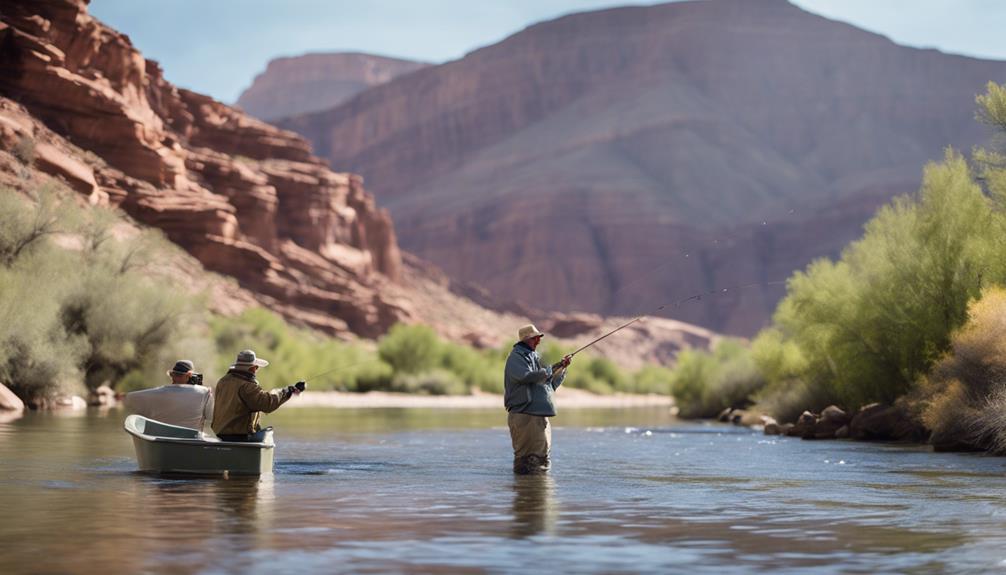
Ensure compliance with Colorado's trout fishing regulations by understanding the restrictions on fishing methods in place. When it comes to trout fishing in Colorado, there are specific rules regarding the methods anglers can use to catch these prized fish. One popular method that's allowed and widely used in Colorado is fly fishing. Fly fishing is a technique where anglers use artificial flies to mimic insects on the water's surface, making it an exciting and challenging way to catch trout.
In Colorado, anglers are also required to use barbless hooks when trout fishing. Barbless hooks are hooks without the traditional barb on the point. Using barbless hooks is important because it makes it easier to release fish back into the water unharmed. The lack of a barb reduces the damage to the fish's mouth, making it easier to remove the hook and minimizing potential harm to the trout.
Reporting Requirements for Trout Anglers
Understanding the reporting requirements for trout anglers in Colorado is crucial for maintaining compliance with fishing regulations and contributing to the conservation of trout populations. By following these guidelines, you can ensure that accurate data is collected to support sustainable trout fishing practices.
Here are some key points to consider regarding reporting requirements for trout anglers in Colorado:
- Harvest Data: Anglers are often required to report their harvest data, including the number and size of trout caught. This information helps wildlife agencies monitor trout populations and make informed management decisions.
- Angler Surveys: Participating in angler surveys is another important reporting requirement. These surveys gather data on fishing effort, catch rates, and angler preferences, providing valuable insights into the recreational trout fishing industry.
- Online Reporting Systems: Some reporting requirements can be fulfilled through online reporting systems. These platforms offer a convenient way for anglers to submit their data and contribute to fisheries management efforts.
- Compliance Checks: Wildlife officers may conduct compliance checks to ensure anglers are following reporting requirements. It's essential to cooperate with these checks and provide accurate information when requested.
- Contribution to Conservation: By adhering to reporting requirements, anglers play a vital role in conserving trout populations and ensuring the sustainability of trout fishing for future generations.
Frequently Asked Questions
Can I Fish for Trout in Colorado Without a Fishing License?
You can't fish for trout in Colorado without a fishing license.
It's important to follow catch limits to protect the trout population and ensure sustainable fishing practices.
Fishing ethics play a crucial role in preserving natural resources for future generations.
Make sure to always have a valid fishing license and adhere to regulations to enjoy trout fishing responsibly in Colorado.
Are There Any Specific Restrictions on the Types of Bait or Lures I Can Use for Trout Fishing in Colorado?
When you're trout fishing in Colorado, it's important to know about bait selection and fishing gear. Make sure you're using allowed bait and lures based on local regulations.
If you're into fly fishing, remember to check for any specific rules. Also, keep an eye on catch limits to stay in compliance with the regulations.
Enjoy your fishing experience while following the guidelines set by the authorities.
Is There a Minimum Age Requirement for Obtaining a Trout Fishing License in Colorado?
To get a trout fishing license in Colorado, there isn't a minimum age requirement. However, it's essential to remember the importance of parental supervision and fishing safety when taking young anglers out on the water.
Make sure to follow all the rules and guidelines to ensure a fun and safe fishing experience for everyone involved.
Enjoy the great outdoors responsibly!
Are There Any Designated Areas Where Trout Fishing Is Prohibited or Restricted in Colorado?
When trout fishing in Colorado, be aware that some areas may have restrictions or prohibitions to protect the trout habitat and promote conservation efforts. It's crucial to respect these rules to ensure the sustainability of the fish population.
Certain areas may have specific fishing seasons or catch limits in place to help manage the trout population effectively and maintain a healthy ecosystem. Always check for any designated areas with restrictions before heading out to fish.
What Are the Consequences for Violating Trout Fishing Regulations in Colorado?
If you break the trout fishing regulations in Colorado, you might face fines. The fine amounts can vary based on the specific violation. There's a warning system in place, but repeated offenses can lead to more severe penalties.
Always make sure to follow the rules to enjoy your fishing experience without any issues.
Conclusion
So, now that you know the trout fishing rules in Colorado, make sure to:
- Get your fishing license.
- Follow catch and release guidelines.
- Be aware of season dates, size and bag limits, and special designated waters.
- Remember to use only artificial baits and lures.
- Abide by all restrictions on fishing methods.
- Don't forget to report your catches as required.
Happy fishing!
